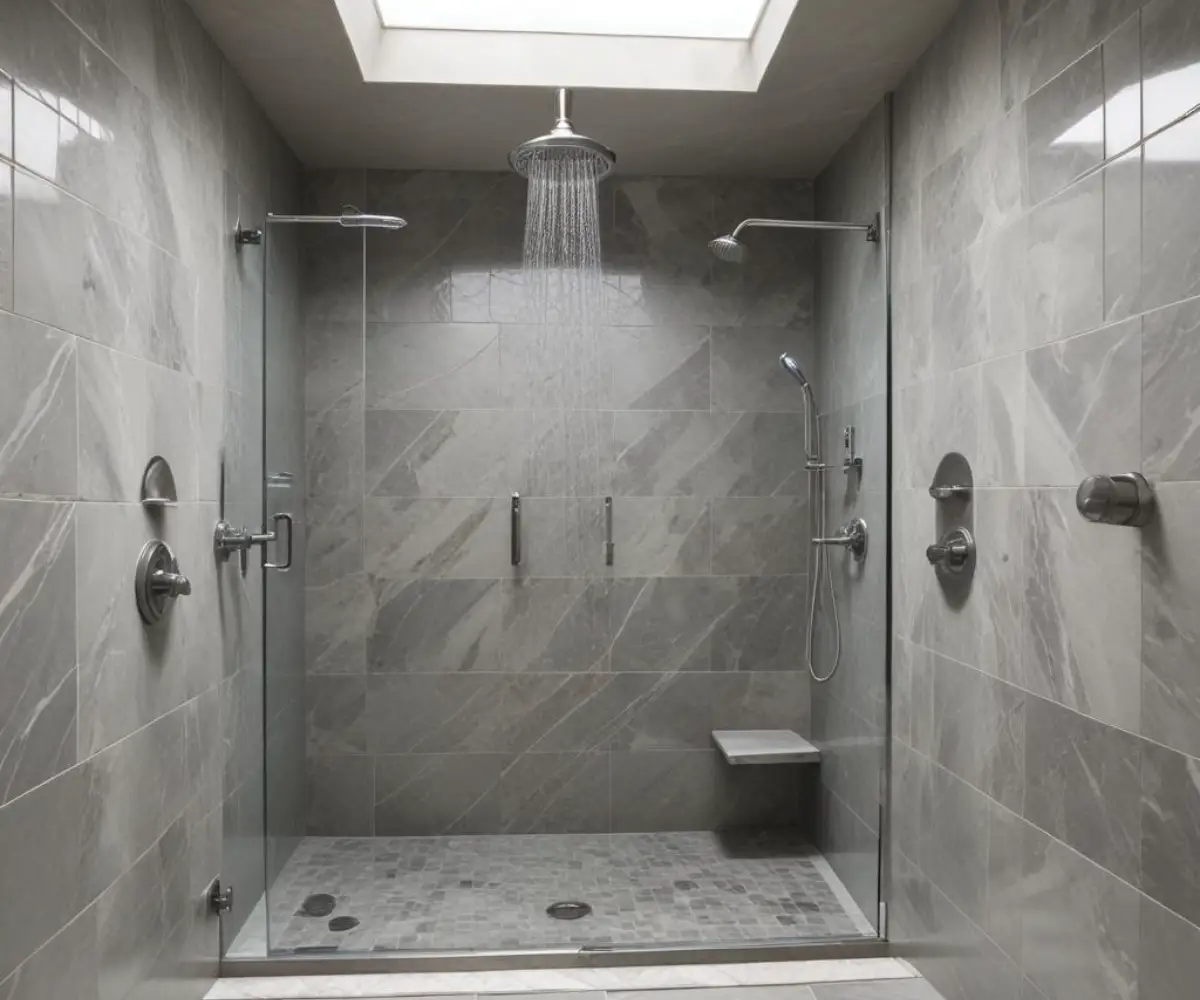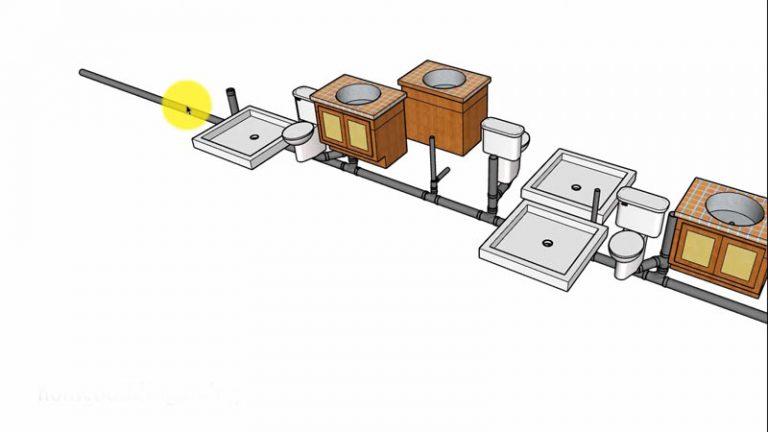Do Plumbers Install Showers? The Answer Will Surprise You
You’re planning a dream bathroom renovation, and the centerpiece is a brand new, luxurious shower. But as you start planning, a critical question pops up: do plumbers install showers? It seems like a simple question, but the answer is more complex than you might think.
Getting it wrong can lead to disastrous leaks, costly repairs, and a project that drags on forever. This guide breaks down exactly what a plumber does, who else is involved, and how to ensure your new shower is installed perfectly from start to finish.
You'll Learn About
The Core of the Question: Who Handles a Full Shower Installation?
Let’s clear this up immediately. Yes, plumbers are absolutely essential for installing a shower. However, they are responsible for a very specific, and arguably the most critical, part of the job: the plumbing system itself.
A complete shower installation is rarely a one-person job. It’s a coordinated effort between several skilled trades. Think of a plumber as a crucial specialist on a team, not the sole player.
What a Plumber Actually Does for Your Shower
A licensed plumber handles everything that involves water supply, drainage, and fixture installation. Their work is the functional heart of your shower, ensuring water gets where it needs to go and drains away properly without causing leaks.
They are responsible for the complex network hidden behind your beautiful new tile. Without a plumber, you simply have a tiled closet, not a functional shower.
The Plumber’s Critical Role: From Rough-In to Final Fixtures
A plumber’s involvement typically happens in two main phases: the “rough-in” stage before the walls are finished, and the “trim-out” or “finishing” stage after the tile and surfaces are complete. Understanding these stages is key to understanding their role.
Phase 1: The Plumbing Rough-In
This is the foundational work that happens after the shower area has been framed. The rough-in is the most important plumbing stage. It involves installing all the pipes and connections inside the walls and floor.
During the rough-in, a plumber will run new hot and cold water supply lines to the shower location. They also install the main shower valve, which is the mixing mechanism that controls your water temperature and pressure. Getting this right is crucial to avoid issues later on; a poor valve installation is often why you might wonder, “why is my shower either hot or cold“.
Finally, they install the drain pipe and connect it to your home’s main drainage system. This ensures all the water from your shower has a clear and secure path to exit your home.
Phase 2: The Final Trim-Out
After the walls are closed up, waterproofed, and tiled, the plumber returns for the final phase. This is when they install all the visible components, often called the “trim.”
This includes installing the showerhead, the faucet handle or control panel, the tub spout if it’s a shower/tub combo, and any body jets. They connect these fixtures to the rough-in plumbing, test everything for leaks, and ensure it all functions perfectly.

The Other Experts You Need for a Shower Installation
So, if the plumber only handles the pipes and fixtures, who does the rest? A full shower remodel requires a team of specialists to handle the structure, surfaces, and finishing touches. A general contractor often coordinates these different professionals.
It’s vital to understand who is responsible for each part of the process. This ensures every component, from the hidden pipes to the visible grout lines, is handled by an expert in that specific field.
The Shower Installation Team Breakdown
Understanding the division of labor is key to a smooth project. While roles can sometimes overlap depending on the contractor, this table outlines the typical responsibilities for a full shower installation project.
| Professional | Primary Responsibilities |
|---|---|
| Plumber | Installs water supply lines, drain lines, shower valve, and final fixtures (showerhead, faucet). |
| General Contractor | Oversees the entire project, coordinates schedules, and manages all the different tradespeople. |
| Carpenter / Framer | Builds or alters the wall framing for the shower enclosure and ensures structural support. |
| Tile Setter | Installs cement backer board, applies waterproofing membranes, sets the tile, and grouts the joints. |
| Waterproofing Specialist | A specialized role focusing on systems like hot mopping. Understanding the pros and cons of different methods is crucial, which is why exploring a hot mop vs. waterproofing guide can be so valuable for your project. |
| Glass Installer | Measures, fabricates, and installs the custom glass shower doors or panels. |
Step-by-Step: The Shower Installation Process
To see how it all fits together, let’s walk through the typical order of operations for installing a new shower from scratch. This timeline shows when the plumber and other trades come into play.
Step 1: Demolition and Preparation
The first step is always tearing out the old shower or tub. This is done by a demolition crew or the general contractor. They take the area down to the studs to create a blank canvas.
Step 2: Framing and Structural Changes
Next, a carpenter will re-frame the walls if necessary. This might involve building a new pony wall, a bench, or a niche for shampoo bottles. They ensure the structure is solid and ready for the new plumbing.
Step 3: Plumbing and Electrical Rough-In
Now, the plumber comes in for their first visit. They complete the critical rough-in work we discussed earlier, setting the stage for everything to come. If you’re adding special lighting, an electrician will also run wiring at this stage.
Step 4: Backer Board, Waterproofing, and Tile
With the plumbing in the walls, the tile setter takes over. They install cement backer board, apply a robust waterproofing membrane over the entire surface, and then meticulously set the tile. This is a detailed and highly skilled process that creates the beautiful, watertight surface of your shower.
Step 5: Plumbing Trim-Out
Once the tile and grout are fully cured, the plumber returns. They carefully drill through the new tile to install the showerhead, faucet trim, and drain cover. They make the final connections and thoroughly test the system.
Step 6: Glass Installation and Final Touches
The last major step is for the glass company to install the shower door or enclosure. After that, painters can touch up the surrounding walls, and your new shower is complete and ready for use.
DIY vs. Hiring a Pro: A Word of Caution
It can be tempting to save money by tackling a shower installation yourself. While tiling or painting might be manageable for a skilled DIYer, shower plumbing is not the place to cut corners. A small mistake behind the walls can go unnoticed for months, leading to catastrophic water damage, mold growth, and incredibly expensive repairs.
Hiring a licensed and insured plumber provides peace of mind. They understand local building codes, have the specialized tools for the job, and are liable for their work. The cost of hiring a professional plumber is a small price to pay for the assurance that your shower is leak-free and built to last.
What Does a Plumber Cost for a Shower Installation?
The cost to have a plumber install your shower can vary widely based on several factors. These include your location, the complexity of the job, and whether you’re replacing an old shower or installing a new one where none existed before.
Generally, you can expect the plumbing portion of a shower remodel to cost anywhere from a few hundred to a few thousand dollars. For a high-end system with multiple jets and digital controls, the price will be higher. This is just one piece of the puzzle; the overall project cost, such as the Kohler LuxStone price, includes materials and all the other labor involved.
How to Hire the Right Plumber for Your Project
Finding a reliable plumber is crucial for the success of your project. Don’t just hire the first person you find online. Do your due diligence to ensure you’re working with a true professional.
Always Verify Licensing and Insurance
This is non-negotiable. A valid license proves they have the training required by your state. Insurance protects you and your home in case of an accident during the installation.
Check Reviews and Ask for References
Look for plumbers with a strong track record of positive online reviews. Don’t be afraid to ask for references from recent customers and actually call them to ask about their experience.
Get Everything in Writing
Always get a detailed, written estimate before any work begins. The quote should clearly outline the scope of work, the materials to be used, the total cost, and a projected timeline. This prevents misunderstandings and protects both you and the plumber.
Conclusion: Your Plumber is a Key Player on a Winning Team
So, do plumbers install showers? They install the most vital part—the plumbing. But a complete, beautiful, and long-lasting shower installation relies on a coordinated team of skilled professionals.
By understanding the plumber’s specific and critical role, you can better plan your renovation, hire the right people for each task, and ensure your project runs smoothly. Investing in a professional plumber isn’t just a cost; it’s an investment in the quality, safety, and longevity of your home.

